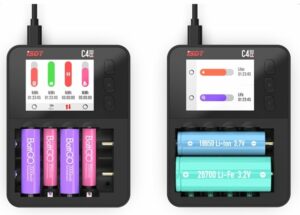Employee Turnover Rate Definition, Formula & 2024 Trends Leave a comment
The best way to determine what is a good or bad turnover rate for your company is to talk to your employees and get their feedback. Ask them what they like and dislike about their jobs, and what they would like to see changed. You can also conduct exit interviews with employees who are leaving the company to learn more about why they are leaving. A high employee turnover rate results in an unfavorable effect on the morale of the remaining employees. Existing employees may face additional stress, resulting in lower productivity.
Creating channels for honest feedback, like regular surveys or open-door policies, helps build a culture of trust. At Patagonia, management actively encourages and acts on employee feedback, which contributes to their high retention rates. Employees want to feel like they’re growing and developing in their careers.
- “For example, our system generates an exportable staff turnover report that automatically calculates staff headcount at the end of each month and provides a turnover percentage,” Teasdale explained.
- These departures can be voluntary (resignations) or involuntary (dismissals or redundancies).
- And when workers leave, the surviving employees are left with handling their work plus the responsibilities of those that left.
- Build camaraderie within your organization by encouraging teamwork whenever possible.
Establish a competitive pay structure
Suppose the HR team compares their turnover rate of 19.23% to the industry benchmark of 15% for similar software development companies. They may notice most separations occurred in the first six months of employment among junior developers, signaling issues with onboarding or job satisfaction. So, you will need to compare your calculated turnover rates against industry benchmarks and internal historical data to assess performance. Identify the trends over time and look for fluctuations tied to specific events or seasons. Ensure consistency in your chosen timeframe across all metrics to avoid misinterpretation of data.
Hire enough people
A high retention rate indicates that employees are engaged and satisfied with their roles. Tracking this over time helps HR identify successful retention strategies and areas needing attention. This metric can also serve as a benchmark for comparison against industry standards.
A 20% turnover rate in a low-impact role might be acceptable, while the same rate in a key department could require immediate intervention. It’s important to communicate the findings and proposed solutions clearly to leadership. Prioritize strategies with measurable outcomes, such as reducing turnover in high-value positions or increasing tenure in key departments.
Discover the power of the employee feedback loop in boosting engagement, satisfaction, and retention. Uncover the secret sauce to keep your employees motivated, productive, and loyal. Provide opportunities for employees to expand their skills through lateral movements, cross-functional projects, or leadership roles.
SAP’s onboarding programs focus on building a strong early connection between the employee and the company, reducing early turnover. This includes the departure of top talent and key contributors, which can significantly impact the organisation. This occurs when employees are dismissed or laid off due to performance issues, restructures, or budget cuts. On the other hand, industries with high turnover have more limited potential for growth, higher seasonal fluctuations, and more demanding schedules. This includes leisure and hospitality, construction, and professional services.
Factors Affecting Employee Turnover
- When employees feel challenged and valued, they are less likely to seek external opportunities.
- Furthermore, such interviews make it easier for your people to buy into ideas and keep them engaged.
- Unmanaged turnover disrupts productivity, morale, and increases costs, as constant hiring drains resources and weakens team cohesion.
- In this guide, we’ll explore effective strategies to enhance the support you provide to your workforce, along with other practical tips to help lower your turnover rate.
- Clear career paths, including lateral moves and exposure to different experiences, can help employees see a future within the organization.
On the other hand, if your low performers are leaving, you could stand to gain by enjoying better employee engagement, productivity and profits. People usually include voluntary resignations, dismissals, non certifications and retirements in their turnover calculations. They normally employee turnover don’t include internal movements like promotions or transfers. The employee turnover rate is a metric of the effectiveness of the human resources management system and the overall management of an organization. Take the number of leavers and divide them by the average number of payrolled employees. You’ll use this resulting number to calculate monthly employee turnover rate.
Decline in morale
A positive, inclusive culture fosters belonging and motivation, reducing the desire to leave. Conversely, a toxic or misaligned culture can lead to dissatisfaction, prompting employees to seek opportunities elsewhere. Companies with strong cultures tend to experience lower turnover as employees feel valued and connected. You’ll need a few data points on hand to calculate your employee turnover rate. HR leaders often examine employee turnover on a monthly, quarterly, and annual basis. You can choose any of them or pick a custom period for your calculation.
A good employee turnover rate is one that is sustainable for your business. This means that the rate of employees leaving your company is not so high that it’s causing problems, but it’s also not so low that it’s preventing your company from growing and evolving. The ideal turnover rate for your company will depend on a number of factors, including the size of your company, the industry you are in, and your company culture. Professional services employees are also highly sensitive to job satisfaction. For HR departments, strategies to keep employees engaged and motivated is crucial to mitigating burnout.
Practical tools to
These organizations have strong workplace cultures, demonstrate that their product or service makes the world a better place, and support charitable causes and ‘giving back’ to society. With 44% of people saying they’ll look for a new job in the next year, as a result of The Great Resignation, organizations have to do the groundwork. You’ll need to take a long, hard look at your retention strategies and provide employees with the tools and support they need to do their jobs efficiently and manageably – wherever they’re working.
According to the Zendesk Employee Experience Trends Report 2024, 90 percent of EX leaders believe standout EX is key to retaining top talent. In this guide, we’ll explore effective strategies to enhance the support you provide to your workforce, along with other practical tips to help lower your turnover rate. Employee turnover measures the number of employees leaving your business within a specified time frame. It includes voluntary exits, layoffs, and terminations and excludes internal changes like transfers and promotions. Nearly one-third of manufacturing employees say that workplace safety is the area where they feel most ignored by their employers. Creating a safe work environment, providing the right safety equipment, and acting quickly to eliminate workplace hazards are long-term strategies for successful retention.
It’s also just more difficult to plan for the future if you’re consistently losing employees and having to replace them. The point of providing these statistics is to give an idea of which industries struggle the most with turnover and why. No one wants to work where they have nothing in common with the other employees and where ideas are frowned upon by senior management.
These benefits demonstrate that the company cares about employees’ overall well-being, making them more likely to stay long-term. Empower employees to connect their daily tasks with broader organizational goals. Employees who feel their work has meaning and contributes to a greater purpose are more fulfilled and motivated to stay. Implement regular surveys and team-building activities to gauge and boost employee engagement.










